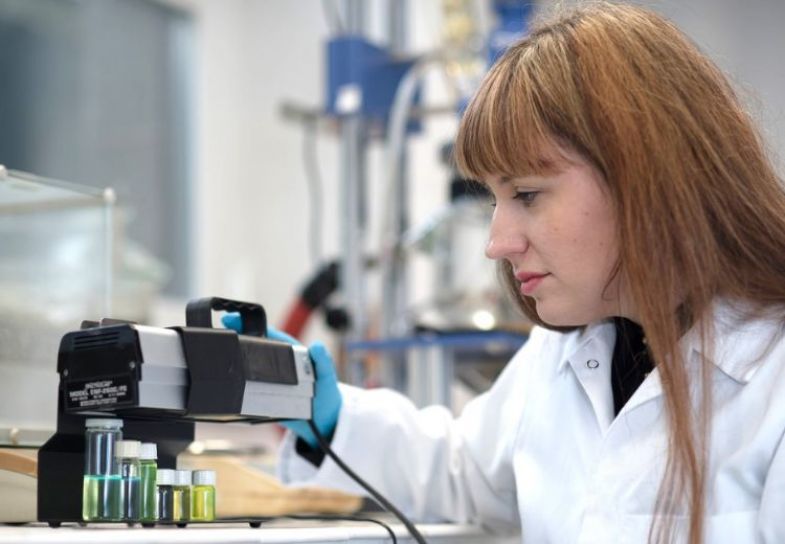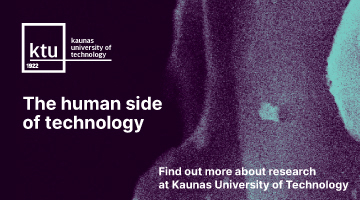
OLED displays deliver extremely rich and accurate colours, smooth motion and the highest contrast level. These features provide exceptional picture quality for a spectacular visual experience. In Lithuania, Kaunas University of Technology researchers are collaborating with Taiwan, where they are sending the organic materials used for the development of OLED devices.
OLED, or organic light-emitting diodes, can produce some of the best picture quality of any display technology. Today, they are mostly used in high-end smartphones and some of the best-looking TVs on the market. Although the experts agree that OLEDs will remain the best display technology for the next years, the competition in the sector is high.
“Like any technology, OLED technology is constantly changing and moving forward. Cheaper, bigger and better OLED displays are entering the market. However, they will have to compete more seriously with QLED, or quantum dot LCD, as we see the emergence of new solutions in this sector, too,” says Dr Daiva Tavgenienė, Associate Professor at the Faculty of Chemical Technology of the Kaunas University of Technology (KTU), a researcher at Chemistry of Materials research group.
The team of KTU researchers led by Professor Juozas Vidas Gražulevičius, is working on creating and researching new materials for organic light emission diodes together with researchers from other countries.

Materials synthesised at KTU improve the efficiency of OLEDs
Dr Tavgenienė says that the production of organic materials starts with inventing a structure. The structure of a new compound is devised and chosen based on scientific papers.
Synthesis then begins – the materials are purified and their structures are confirmed. Only then can they be further investigated and considered for use in the manufacture of specific light-emitting OLED devices.
Organic materials are first developed in the laboratory: a series of synthetic reactions produce the target products. The photophysical, thermal, electrochemical and other properties of these materials are then studied and the materials are sent to Taiwan, where prototypes of OLED devices are being made.
“We usually synthesise materials that will be used in the hole-transporting layer of the devices or as matrices. Such materials should have certain properties: they should have appropriate triplet state energy values, be efficient in transporting charges and have good thermal and morphological stability of the films,” explains Dr Tavgenienė.
KTU researchers synthesise materials that can improve the efficiency of organic LEDs. Their research outcomes have contributed greatly to the development of OLED technology and the compounds synthesised at KTU laboratories have been patented in Europe and beyond.
The Chemistry of Materials research group has published many papers on this topic in high-profile scientific journals.
“We have been collaborating with scientists from Taiwan for several years and have been working together on various research projects. We have achieved good results over the years, and this cooperation is ongoing,” says Dr Tavgenienė.
Taiwanese scientists are known for their semiconductor industry and have a wealth of knowledge and experience. KTU scientists send materials to Taiwanese universities, where they are tested in producing various OLED devices to optimise them for the best possible result.
“We have collaborated with scientists from Poland, Japan, Latvia, China and Ukraine,” emphasises the KTU researcher.
Inside OLED screens – improved quality and less energy consumption
Dr Tavgenienė explains how OLED technology differs from others. LCD (Liquid Crystal Display) screens are made of a panel of liquid crystal molecules. An electric current that passes through these molecules, either allows the light to pass through or entirely blocks it. The liquid crystals themselves do not emit light, but let it pass through and diffuse the backlight behind them.
“LED technology has become quite important in today’s global lighting market and can save up to 80 per cent of electricity for the same amount of light emitted. LEDs are semiconductor diodes that emit monochromatic light when electricity passes through them. The colour of the light depends on the materials purposely added to the chip. The main feature of LEDs is their long lifetime, as they can operate for more than 100,000 hours,” says the KTU researcher.
In OLED technology, each pixel of an OLED display is made of a material that glows when an electric current is directed at it. The special electroluminescent material used in OLED devices is made of organic chemical compounds. Each colour requires a different organic compound.
“This means that each OLED dot, out of which the whole screen is made up, produces light which depends on the amount of current flowing through it. Unlike other light-generating elements, OLEDs can remain completely dark,” says the researcher.
OLED technology is characterised by high mechanical stress and vibration resistance, low voltage capability and very high brightness efficiency. OLED technology also offers significant energy savings while maintaining the same illumination level.
“For example, OLED devices do not use backlighting because they use organic materials through which each pixel becomes a light source when electricity flows. This technology produces very sharp contrasts that help to render the image quality realistically,” she says.
OLED displays can provide a clear view from any viewing angle. The advantages of OLED include vivid colours, high colour accuracy at all brightness levels, ultra-dark blacks, the best contrast compared to other types of displays, and low power consumption, among others.
However, the competition in the market is tough as competing technologies are developing all the time.
Learn more about materials chemistry research at Kaunas University of Technology, Lithuania.












